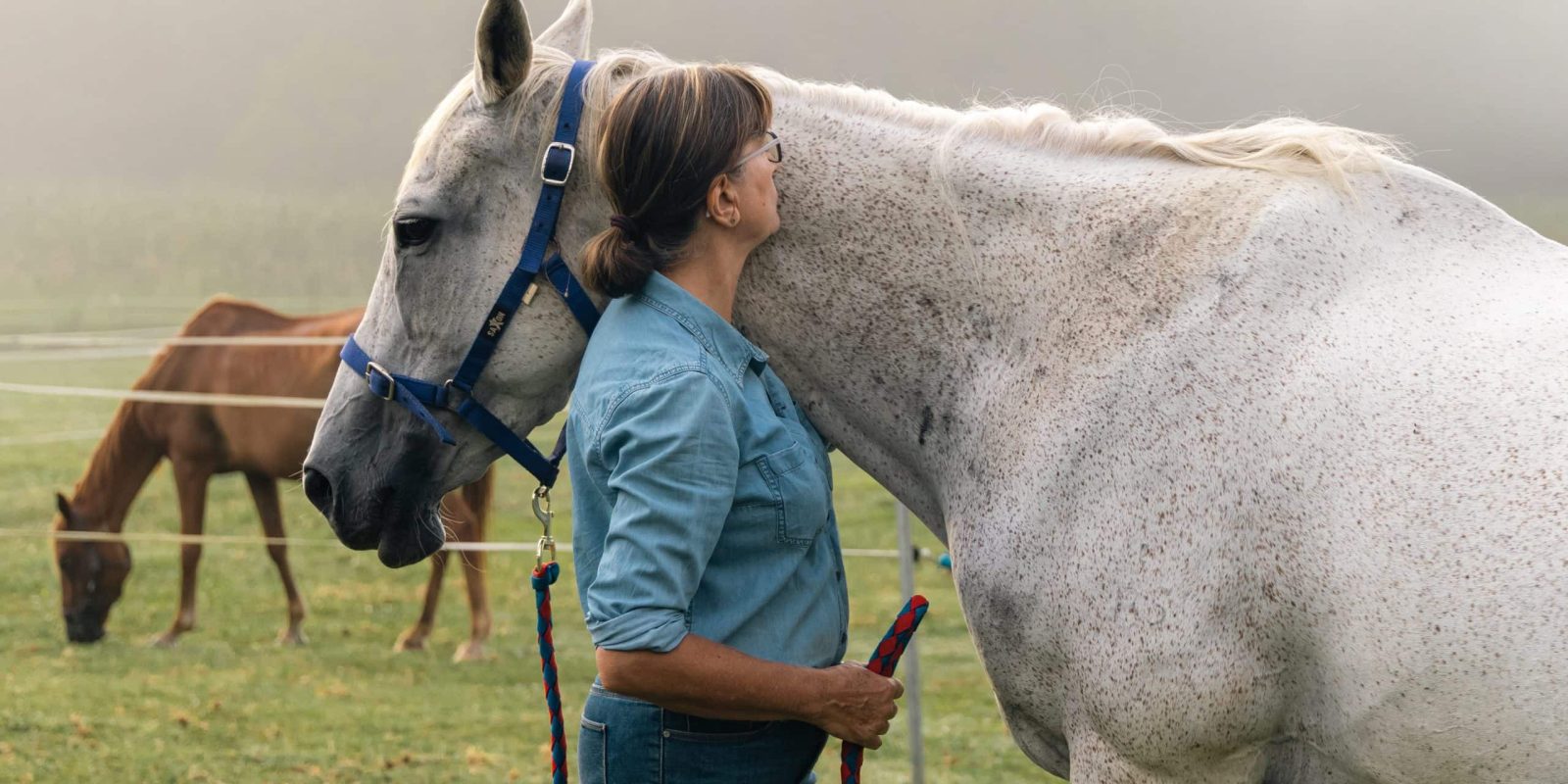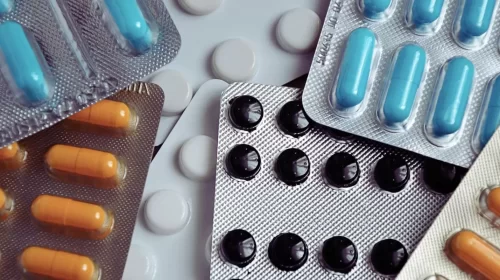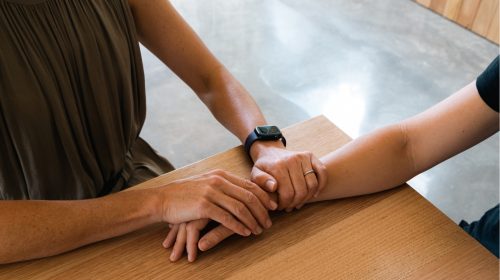In her work with rescue horses, Candida Baker has seen some magical moments of healing take place between horses and humans.
Equine Therapy
Most of us suffer from one form of trauma or another at some point in our lives. It could be from the loss of a loved one, or witnessing another’s suffering, or from the deep wounds of abuse. No matter the source, it seems as if trauma is an almost inevitable part of being alive.
My deepest understanding of trauma comes from 40 years of work as a horse rescuer and the past decade of running horse rescue charities. In that time, I’ve seen trauma writ large in horses – whose only language is physical.
Becoming an Equine Facilitated Learning (EFL) practitioner some years ago put an umbrella qualification around the groundwork and healing work I do with horses and humans, but in essence what I’ve discovered is that unlike humans, horses have no closed belief systems. Even a horse carrying trauma or abuse doesn’t question whether energy work, hands on healing, reiki, acupuncture, essential oils, or animal communication ‘work’. They ‘accept’ healing without a human analytical construct, and because of this, they can also offer healing with an open heart.
Trauma, as we know, occurs whenever someone feels powerless in the face of a serious threat. Being in nature, in the presence of horses, seems to help children, teenagers and adults, particularly those with PTSD, anxiety or depression, begin the work of re-connecting to the self, and to their environment.
Horses, just like humans, can be triggered, and one of the clearest examples of a trigger I’ve ever witnessed was with an Off the Track Thoroughbred called Syd. He was a gentle horse, and had obviously had a good start in life because he took to trail-riding, arena work and jumping with a calm confidence that was unusual in an ex-racehorse. After some months with us, and learning how to jump, which Syd loved, we took him to a small jump club event not far from us. As we unloaded him from the horse float, he heard the loudspeaker, saw the bunting and fell straight onto the ground. Within seconds he was lathered in sweat.
It was obvious that Syd, with no ability to understand the difference, thought he was back at a racetrack, and whatever trauma he’d suffered there kicked straight back in. We let him spend a few hours in recovery, gave him hay and water and gently took him home. His racetrack trauma gradually lessened, and some many months later he went to a beautiful home, but I’ve never forgotten the look of terror in his eyes when he saw where he was – or where he thought he was.
Over time I’ve seen the same kind of responses to trauma in horses that exist in humans – including disassociation, shutting down emotionally, hyper-vigilance, or extreme fear. Very, very rarely does it manifest in protective aggression, even though some of the horses that have come to me have been beaten, or abused, or starved, or treated so badly that it’s a wonder they ever recover enough to trust again, and yet somehow, they make that journey, so much so that then they might even become part of my equine therapy herd.
I remember when I realised that horses, given the chance, want to connect with us beyond our normal, everyday riding and horse-care lives. I was working with a young woman who was suffering from anxiety. We were with an old horse of mine, Beau, and I was showing her something I’ve learned over the years – that if you put your hands near a horse’s body and close your eyes, you can feel a golden thread of energy traveling from your hands to their body, or from their body to your hands.
Michelle* was nervous at first, but she did as I asked, closed her eyes, breathed in deeply through her nose and out through her mouth, and held her hands close to Beau’s body. We stood there in complete silence for several minutes, and gradually Michelle began to smile, as her hands seemed almost to find a life of their own, moving in towards, and away from Beau’s body. Beau lowered his head, his eyes soft and half-closed, and rested one back leg, while Michelle continued to hold her hands out towards him, and in five minutes she was beaming with joy. Beau began to shift his body, to yawn, and to shake his head, and, at the same moment, Michelle opened her eyes.
“Oh, my goodness,” she said to me, “that was amazing.”
But it wasn’t quite finished yet, because just as I said to her that if she would like to give Beau a cuddle to thank him, she ran towards him, throwing her arms around his neck, and bursting into tears, she buried her face in his mane. Blow me down if that beautiful big old horse didn’t turn his head around and give her what I can only describe as a horse cuddle. They stayed wrapped up in each other for a good while, and then Beau straightened up, yawned again and looked straight at me, as if to say, well, that’s all done then. Michelle stretched her arms high up above her head, and looked at me.
“Wow,” she said. “Beau just healed something inside me that got broken years ago when my relationship ended, and I didn’t even know it was still there.”
Although I had already for many years been witnessing miracles (and some tragedies) with horses, that day made me stop and think – and I’ve never stopped thinking – about the healing connection between horses and humans.
My small herd of horses contains one particularly special healer – a Stockhorse/Arabian cross, my silver-coloured Sapphire, or Sapphy, a horse I personally rescued who came to me a flighty mess of nerves and anxiety. Sapphy excels at connecting with people energetically. She will drop easily into what I think of as a state of limbic resonance.
Limbic resonance is the idea that the capacity for sharing deep emotional states arises from the limbic system of the brain and can include heightened feelings of empathic harmony. Watching Sapphy at ‘work’ with a client is to witness a sentient being dropping into an almost hypnotized state, her eyes almost closed, her breath soft, her head low while she and her human exchange – what? I can’t even really define it, but something that makes people’s hearts open to an infinite sense of peace.
These days there are numerous organizations creating therapeutic relationships between horses and humans, all committed to providing safe spaces for people of all ages to explore ways of how they can – through interaction with horses – expand their emotional awareness and aid their mental health.
With this: There is an increasingly strong body of evidence to support the use of Equine Therapy for those diagnosed with Autism Spectrum Disorder (ASD). According to the Autism Research Institute, Equine Therapy can reduce irritability, improve emotional health as well as social communication and word fluency in children and teenagers with ASD.
Through the intertwining of the rescue work I do via my small charity, Equus Alliance, (creating alliances between humans and rescue horses), my writing and personal work with horses as ‘The Horse Listener’, it struck me recently that the horses themselves seemed to be orchestrating this new phase of ‘being’ with horses and humans for me, and who am I to question the horse?
*Michelle’s name has been changed.

Source:



